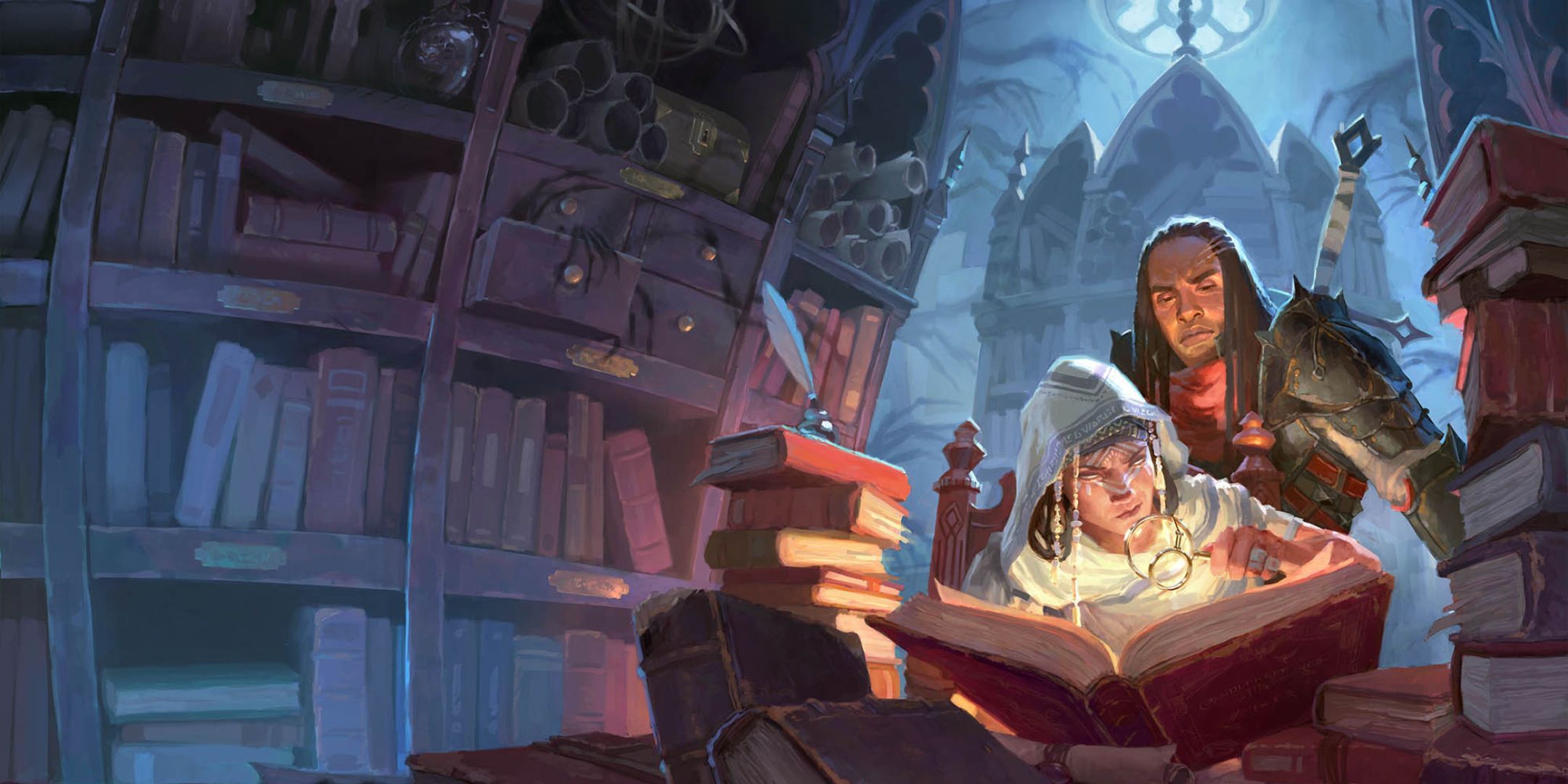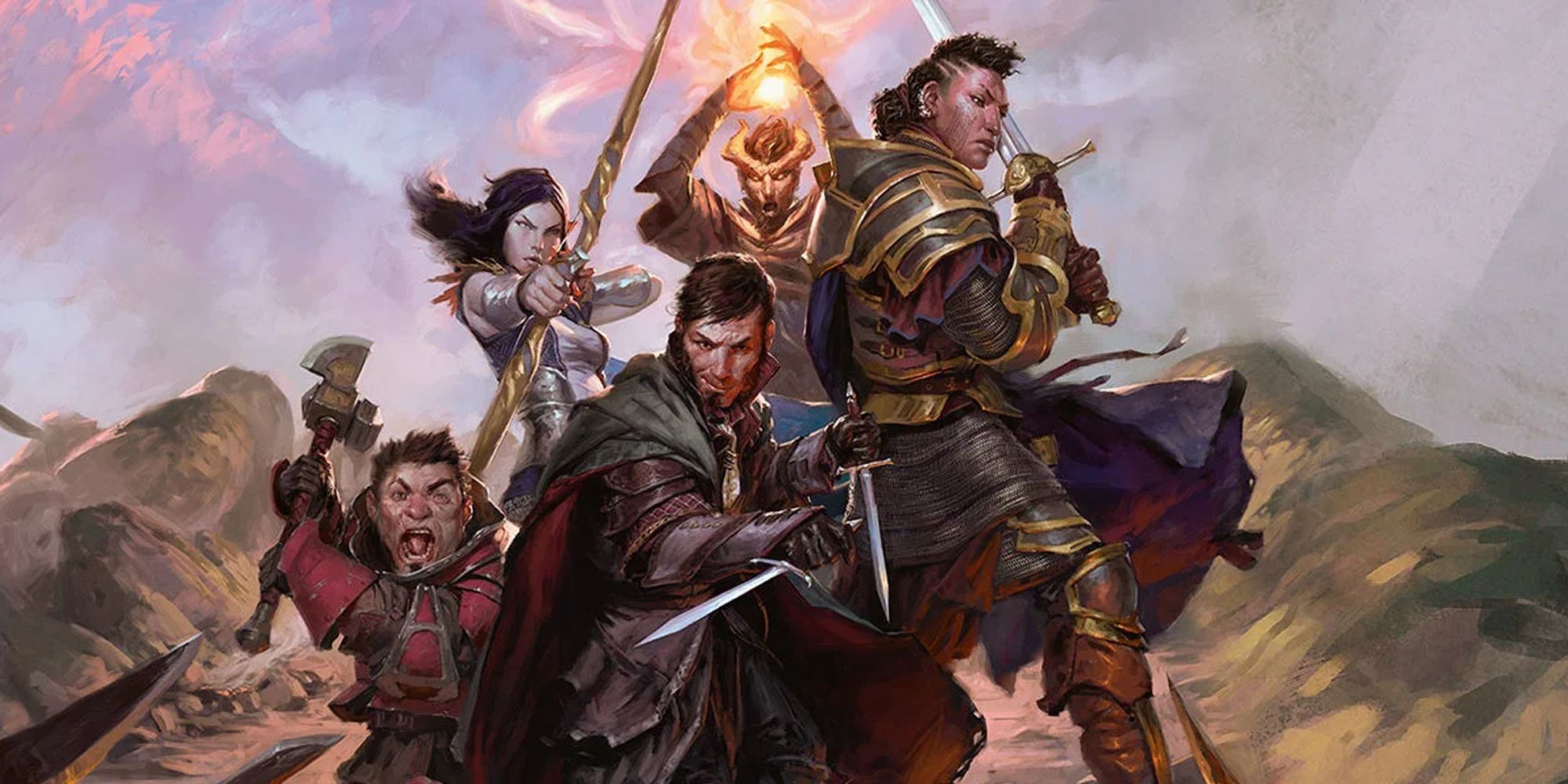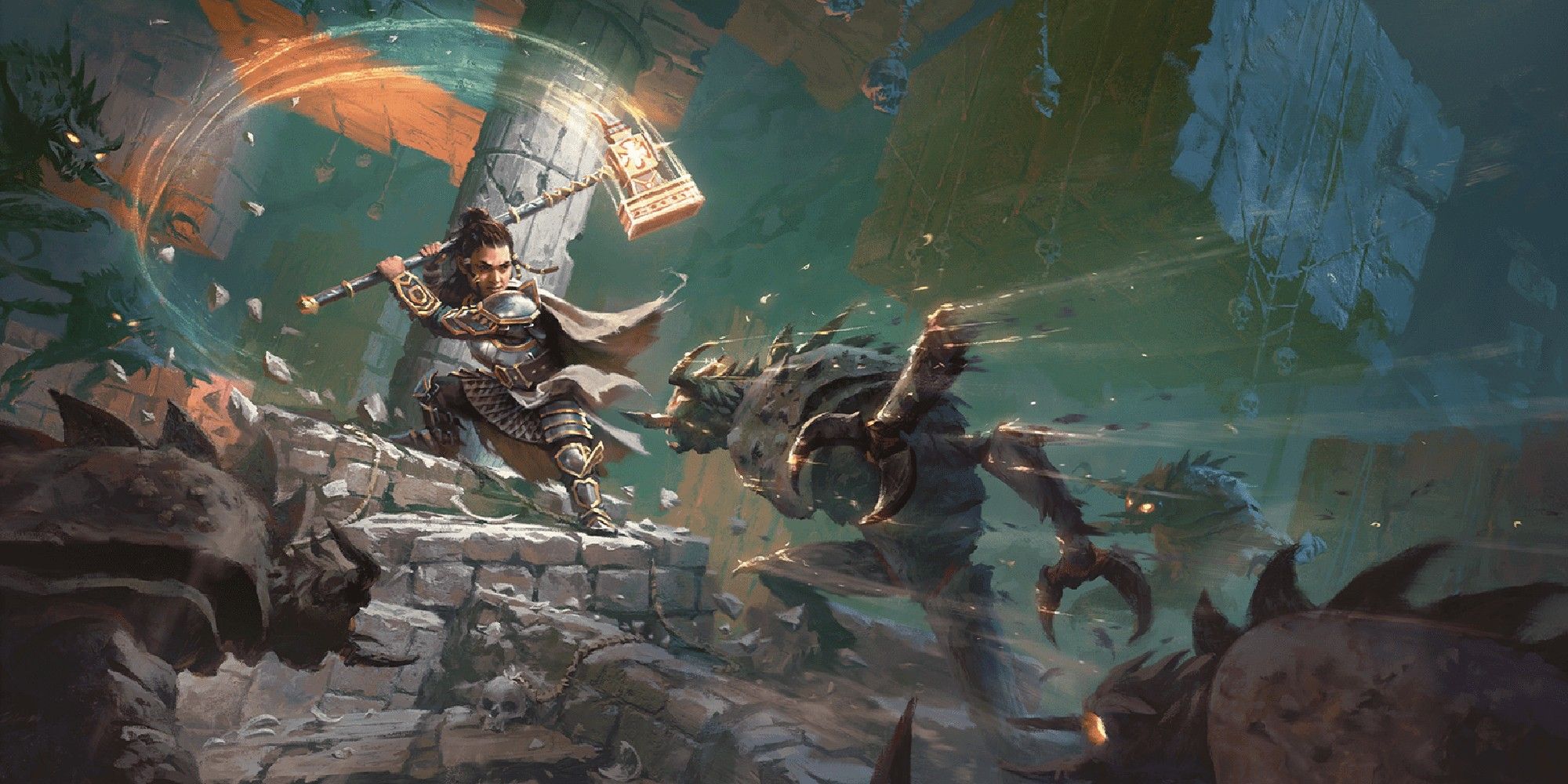Summary
- Reading the adventure book is crucial to understanding the story direction and adapting events organically.
- Incorporate player backstories into the narrative, even if it means changing elements of the adventure.
- Adjust the tone, difficulty, loot, and have key NPCs prepared to ensure an engaging and personalized experience.
Being a Dungeon Master is not easy work. Worldbuilding is hard; you have a lot to prepare and be aware of, and you have to deal with your players’ shenanigans—though let’s face it, that’s what makes it fun. You can relieve some of that stress by running a pre-made adventure, official or homebrewed, and simply follow the book to tell the story.

Related
Dungeons & Dragons: 25 Ideas For Running A One-Shot
For beginners or a quick adventure, one-shot campaigns can be the perfect way to go.
While that will certainly make your job a lot easier, that doesn’t mean you don’t have any work to do whatsoever. There are still things to prepare for in any campaign in Dungeons & Dragons, and you can also change things—it’s still your take on the story.
1
Read The Book
Shocking, We Know
Who could’ve seen this tip coming? Jokes aside, it’s normal not to feel like going through the whole thing—some books are big. However, while reading word for word isn’t necessary at first, going through the book to understand where the story is going is important.
How will you roleplay Strahd von Zarovich in his first encounter with the group if you (and by that, him) don’t know his end goal? By knowing where the story is going, you can foreshadow things and make events reach their conclusion organically. Read the story, see where it’s going, change things if you don’t like it, or go with what’s written. Either way, you need to read it.
You can also watch adventure story guides on websites like YouTube.
2
Include Player Characters’ Backstories In The Narrative
Even If It Means Changing Things
In Lost Mine of Phandelver, one of the enemy groups the party will deal with is a group of criminals known as Redbrand, led by Glasstaff. But let’s say one of your players has a backstory that involves seeking revenge on a group of criminals who killed their family, and the player named them Edgelords, led by Mr. Edgy—very creative, we know.

Related
Is The 2024 Dungeon Master’s Guide Worth It?
The 2024 Dungeon Master’s Guide arrives to give you a hand if you’re taking your first steps in the world of Dungeons & Dragons as a DM.
So, why not replace the criminals in the adventure with the ones your player created? This one is a straightforward example, but the point is you can analyze what your players have delivered you and see how the story can be affected by it. Depending on the backstories your players send you, you can even change the villain’s main goal—the more connected they feel, the better.
Changing events is particularly good if one of your players has already gone through this adventure in the past—you can still surprise them.
3
Adjust The Tone
If Necessary
When picking an adventure, it’s normal to stick with the popular ones, like Curse of Strahd. That’s all fine and good, but what if your players are not super fond of the style of the adventure and its content? What if they want something a bit more lighthearted?
You could consider changing adventures, but you can still run the same adventure and change its atmosphere. You can make characters more comical, roleplay them in a silly way, and even Strahd can behave more like a cartoon villain than a monster if that’s what you and your group prefer. The same story can be told in many ways.
The opposite applies here, too: You can take a lighthearted story and make it far more serious and even add more violence and combat to a narrative that is mostly social interactions because the combat is more appealing to you and your group. Ask your players what they like and add it to the story.
You can also give your players a synopsis of the adventures and have the whole group decide together which adventure they should go on. Giving them a synopsis also helps ensure the players will make characters that fit the style.
4
Adjust The Difficulty
If Necessary, Too
Another thing you may consider tweaking is how easy or how hard the adventure is. Each person has a different take on difficulty; some will embrace it and prefer the game for it, while others don’t want to get their butts kicked by the enemies.
You can still run something like Tomb of Annihilation for a group that doesn’t like hard games; you just need to tune things down. Or you can take a starters’ campaign and make it more challenging if the group is doing well. Ask for their feedback on what they want for difficulty, and adjust it if necessary.
5
Adjust Loot According To The Party
Don’t Give A Staff To A Martial Group
Something that can be a problem with pre-made adventures is that these adventures don’t know what kind of party is going through it. Usually, the party composition will be varied enough that every item works for someone, but what if no one uses martial melee weapons, for instance, and most of the loot revolves around that?
Another problem could be that most loot benefits one or two PCs, so they keep most of it, leaving a good portion of the party without nice magical items. Ensuring proper rewards for your party is essential, and that may require you to swap or adapt items.
6
Prepare Key NPCs Ahead Of Time
Don’t Wing Them
We already talked about being aware of the whole plot before starting the story, and one of the most important parts of the story is the cast. While you don’t need to worry about the protagonists—that’s the players’ job—the rest of the cast falls to you.

Related
Dungeons & Dragons: How To Run A Campaign In Greyhawk
Greyhawk is an expansive and storied setting in D&D, but how can you run a campaign in such an iconic place? Let’s find out.
Some characters will become more or less important depending on how much attention the party gives them, but some characters are necessary to make the story go forward, such as mentor figures, quest-givers, and, obviously, the BBEG.
Think about personality, motivation, backstory, and how player’s meddling affects them. Captivating the party with an improvised character is a gamble, so if the character is too important to leave it to chance, it’s best to think about them beforehand. Or give your BBEG a silly voice; players love that.
If your players become more interested in an irrelevant character, try re-writing things and making this character more important.
7
Have Rules That Will Come Up Often Prepared
What Can The BBEG Do, Again?
Now, let’s say your BBEG, as well as some of their minions, has a power that gives enemies the frightened condition. Because of that, you know this condition will come up often.
Thus, leaving notes prepared to remind you what it does is very important, especially because depending on the enemy’s feature, it may do more than just trigger the condition itself, such as make the target run away on their turn.
Memorizing everything can be a lot, which is why making notes is useful. But you’re bound to have a lot of notes as a DM, so keeping the ones you consider more important organized is crucial to make sure things go smoothly. As for rules that come up from players’ actions, you can ask them to keep notes of their abilities, so you don’t need to worry about every detail yourself.
8
Prepare Backup Content
Prepare To Improvise
Improvising is a skill that can be practiced and improved over time. Still, if you’re not there yet, or you’re playing online with images and tokens, having some stuff prepared just in case you need to improvise is useful.
Things such as random NPCs for whenever you need a new bartender, random encounters that can happen during a dangerous trip, or even simple magical items that can be used as loot, among others, are useful to have around. Have some lists ready, roll a die to choose one (or pick one you think matches the situation), and go with it.

Dungeons & Dragons
- Original Release Date
-
1974-00-00
- Player Count
-
2+
- Age Recommendation
-
12+ (though younger can play and enjoy)


















Leave a Reply